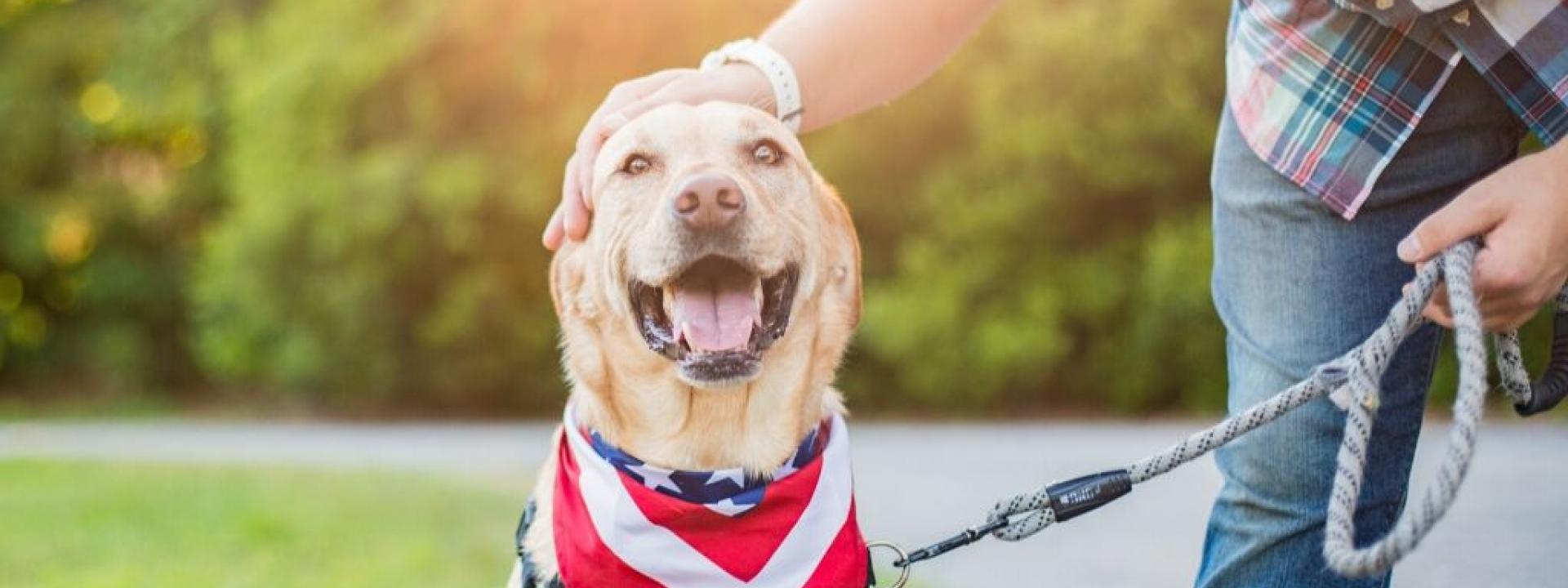When most people hear the term “microchip”, they think of computers and robots. When you’re told that you should get your pet should be microchipped, you might picture some SciFi version of what is actually going to happen but, trust us, there is nothing quite so ominous involved in the procedure. So let’s talk about what microchipping is and what it isn’t. It’s particularly important to discuss this around this time of year, as the main job of a microchip is to help lost pets get back to their owners. More pets get lost on the 4th and 5th of July than any other day of the year due to pets panicking over the fireworks.
What is a Pet Microchip, And What Is It NOT?
A Pet Microchip is an extremely small, low-frequency device that is enclosed in sterile glass or very strong sterile plastic. It is generally the size of a grain of rice. It doesn’t contain any radiation or batteries that could harm your pet.
Your pet’s microchip is not a GPS and can not be used to track your pet if it becomes lost.
If a Microchip Isn’t a GPS And Can’t Track My Lost Pet, Why Bother?
A dog or cat microchip is a permanent means of identification for your pet. Where collars and tags can fall off, your pet’s microchip won’t. Even if your pet never leaves your side and is only indoors, there is always a risk of them getting lost, or accidentally let out. You can search the internet for hundreds of stories of pets being returned to their families after years and thousands of miles. Just ask your veterinarian, as we all have at least one story of a pet going home due to the trusty microchip.
If your pet is lost and taken into a shelter or veterinary hospital, the first thing they will do is to scan for a microchip. When a microchip is found they will contact the microchip company and report that the pet is found. Once the owner is contacted, the company will put them in contact with the veterinarian or the person that found the pet depending on the situation. Their intention is to get your pet back home in the safest way possible.

What Does a Microchip Show When It’s Scanned?
Some pet owners are concerned about privacy when it comes to microchipping, but the fear is unfounded because your private information is not provided on the microchip reader. The only thing that will show up is a series of letters and numbers. Each manufacturer has its own system for assigning a unique identifier for its microchips. If your pet is lost, whoever finds them will not receive your information. The microchip company will get in contact with you themselves.
Your contact information should be verified at least once a year and updated every time there may be a change in your phone number or address. If you find a pet with a microchip, you can use AAHA Universal Pet Microchip Lookup website.
How is The Microchip Implanted?
Microchipping is a very simple procedure that’s done during a visit to your veterinarian. The veterinarian will first scan your pet for a device to ensure that it is not already chipped. Cat and dog microchips come individually packaged with their own sterile needle and syringe.
The veterinary team will prep the area below the neck and in between the shoulder blades with a little rubbing alcohol. The microchip is then inserted with a needle. Once the needle is removed, the veterinarian will pinch off the skin to keep bleeding at a minimum. They will then scan the chip, verify that the number on the reader is the same as the number that they have, and note this in your pet’s records. Make sure that you keep this number somewhere safe but also that can be easily accessed.
The microchipping procedure can be a bit painful for your pet, but it doesn’t last long—it’s about the same amount of time they would feel pain after receiving a vaccination.
Is One Brand of Microchip Better Than Another?
There are many different manufacturers of microchips out there, but your veterinarian will usually only carry one. They may base their decision on preference for microchip brand or type, price, ease of registering, and/or whether it’s ISO compliant.
Some things that you can discuss with your veterinarian about pet microchipping are:
- Cost - Does it include lifetime registration?
- Registration - Is it easy to access in case you need to change your contact information?
- ISO-compliancy - Do you travel frequently with your pet? Are you or your spouse in the military?

Are There Risks Associated With Microchipping?
Risks are extremely low with microchipping. The site where the pet is microchipped may be sensitive for a couple of days. Keep it clean and dry for a day or two, and avoid using anything topical on their skin such as flea and tick control. This will prevent infection or irritation.
Although it is very rare, sometimes microchips will migrate or fail. It is best to have your pet’s microchip scanned every time they see their veterinarian. You can even ask your groomer or boarding facility to do so if they have a scanner.
What do I need to do when my pet goes home?
Microchipping is a very minor procedure and doesn’t require any aftercare instructions. It is best that they stay out of the water for a few days, and you should try to avoid that area when brushing or playing with your pet. Your veterinarian may have additional recommendations based on your pet’s lifestyle, and you should discuss this with them.
Don’t forget to keep your information updated and periodically have your pet scanned. If your registration is not updated, your pet’s microchip is useless. Have any questions about the pet microchipping process? Please feel free to give us a call. We want to make sure that any pets that accidentally escape on the 4th of July are safely returned to their home, sweet home.

